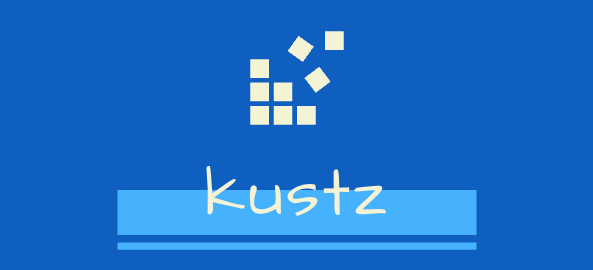 从零开始写 k8s 发布工具 —— 解析 URL 为 Ingress
从零开始写 k8s 发布工具 —— 解析 URL 为 Ingress
# 2.3. 解析 URL 为 Ingress

之前已经提到过, 在 kustz.yml 中的字段值, 要尽量做到 见名知义。
对于 Ingress 而言, 在发布之后, 我们访问的就是 URL 地址。
http://api.example.com/v1
因此我们可以考虑 从结果推导解析渲染 Ingress 。
# Kubernetes Ingress
老规矩, 我们还是通过命令看看创建一个 ingress 需要提供哪些参数。
$ kubectl create ingress simple --rule="foo.com/bar=svc1:8080,tls=my-cert" -o
yaml --dry-run=client
2
在 rule 中, 提供了两组 k-v。 其中, foo.com/bar 就是一个不带协议的 URL。
再来看看输出结果。
apiVersion: networking.k8s.io/v1
kind: Ingress
metadata:
creationTimestamp: null
name: simple
spec:
rules:
- host: foo.com # 多 host
http:
paths:
- backend: # 一个 host 多个后端服务
service:
name: svc1
port:
number: 8080
path: /bar
pathType: Exact
tls:
- hosts: # 多个证书
- foo.com
secretName: my-cert
2
3
4
5
6
7
8
9
10
11
12
13
14
15
16
17
18
19
20
21
一个基本的 Ingress API 配置, 包含了
- 主要由两个模块
rules和tls构成。 - rules 是个数组, 即 一条或多条 URL。
- 每条规则可以有多个后端服务。
- 规则路径有一个特殊的
pathType参数, 表示规则是 Prefix(前缀匹配) 还是 Excat(精确匹配)
补充, 还有一个重要的模块
annotations通过声明控制ingress-class行为。
$ kubectl create ingress annotated --class=default --rule="foo.com/bar=svc:port" --annotation ingress.annotation1=foo
# 编码
有了之前 Service 打样, Ingress 就容易很多了。
# kustz.yml 配置
之前已经提到过了, 我们希望 ingress rule 所见即所得。
# ...省略
ingress:
rules:
- http://api.example.com/user/*?tls=my-cert&svc=srv-webapp-demo:8080
- http://demo.example.com/login?tls=my-cert
annotations:
k1: v1
k2: v2
2
3
4
5
6
7
8
- rule 就是最终实际对外暴露的 URL
- rule 通过 query 参数
tls和svc传递后端证书名和服务。 - 为了区分
Prefix和Exact两种 PathType, 我使用了 通配符*。
# Annotations
Annotation 还是很简单的, 本身就是 map 对象, 直接赋值就可以了。
ing := &netv1.Ingress{
TypeMeta: metav1.TypeMeta{
APIVersion: "networking.k8s.io/v1",
Kind: "Ingress",
},
ObjectMeta: metav1.ObjectMeta{
Name: kz.Name,
Labels: kz.CommonLabels(),
Annotations: kz.Ingress.Annotations,
},
// ... 省略
}
2
3
4
5
6
7
8
9
10
11
12
# Kubernetes 官方 IngressRule
在官方 IngressRule 结构体中规则描述还是挺多的。 截取部分
- 需要满足
RFC 3986规范- host 字段不能是 IP 地址。
- 不支持 80,443 之外的端口。 即只支持
http和https协议。
- host 可以带
* 号, 即支持泛域名。
文档中还专门强调了, 这些规则在以后可能会改变。
# PathType
之前提到过, PathType 在控制匹配行为上非常重要。
- Prefix: 前缀匹配, 也可以理解为模糊匹配。
- Exact: 精确匹配, 只有100%匹配才生效。
- 不建议使用 还有一个值
ImplementationSpecific, 表示由 ingress-class 决定值是 Prefix 或者 Excat。
PathType 其实虽说不难, 但是官网还是给了一个 Example 详细列举了匹配规则。 建议还是看一下。 https://kubernetes.io/docs/concepts/services-networking/ingress/#path-types
代码中
- Type 默认类型是
Excat。 相对比较安全。 - 通过判断
path末尾最后一个字符是*则为Prefix规则。
func NewIngressRuleFromString(value string) *IngressRule {
// ...省略
// ex: /api/*
path := ur.Path
typ := netv1.PathTypeExact
if strings.HasSuffix(path, "*") {
path = strings.TrimSuffix(path, "*")
typ = netv1.PathTypePrefix
}
// ...省略
2
3
4
5
6
7
8
9
10
确认 Prefix 之后, 别忘记把
*从 path 中去掉。
# 渲染 Ingress
在官方 Ingress 结构体中字段一层套一层, 少说五六层。
因此在代码中定义了一个 IngressRuleString 保存所需要的字段信息。
type IngressRuleString struct {
Host string
Path string
PathType netv1.PathType
TLSSecret string
Service string
}
2
3
4
5
6
7
- 通过函数
NewIngressRuleFromString解析字符串。
func NewIngressRuleFromString(value string) *IngressRuleString {
}
2
- 通过方法
KubeIngressTLS,KubeIngressRule创建 tls 和 rule。
func (ir *IngressRuleString) KubeIngressTLS() *netv1.IngressTLS {
}
func (ir *IngressRuleString) KubeIngressRule() netv1.IngressRule {
}
2
3
4
5
# IngressRuleString
注意, 在定义 IngressRuleString 的时候, 我偷了个懒。
前面说过, ingress rule 是支持多个后端服务的, 所以 Service 应该是 切片 类型。
type IngressRuleString struct {
Service []string
}
2
3
但在我的定义中是 字符串 类型。
// 渲染 Ingress
func (kz *Config) KubeIngress() *netv1.Ingress {
rules, tlss := ParseIngreseRulesFromStrings(kz.Ingress.Rules, kz.Name)
// ... 省略
}
// 解析字符串
func ParseIngreseRulesFromStrings(values []string, defaultService string) ([]netv1.IngressRule, []netv1.IngressTLS) {
// ... 省略
for _, value := range values {
ing := NewIngressRuleFromString(value)
if ing.Service == "" {
ing.Service = defaultService
}
}
// ... 省略
}
2
3
4
5
6
7
8
9
10
11
12
13
14
15
16
17
18
- 在调用的时候传递了一个 服务同名 默认值。
- 服务同名 不包含端口, 即
srv-webapp-demo。 省略端口默认为80
func (ir *IngressRuleString) toKubeIngressBackend() netv1.IngressBackend {
// srv-webapp-demo[:8080]
svc := ir.Service
port := int32(80)
parts := strings.Split(svc, ":")
if len(parts) == 2 {
svc = parts[0]
port = StringToInt32(parts[1])
}
}
2
3
4
5
6
7
8
9
10
11
这一处默认值 反过来要求了 Service 的端口映射必须是 80:xxxx
# kustz.yml
service:
ports:
- "80:8080" # cluster ip
2
3
4
为什么?
因为当管理多个服务(尤其是多个团队或语言的服务)时, 统一使用
80为 Service 入口也可以作为一个强制规则约束, 节省脑细胞。
# 测试
执行命令, 检查结果是不是和自己期待的一样。
$ go test -timeout 30s -run ^Test_KustzIngress$ ./pkg/kustz/ -v
如果不是, 就回去检查代码吧。

